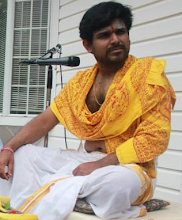Two problems I have been encountering as part of communication, just as often as I communicate, are
- Interruptions – When I talk, people want to put their viewpoint in the middle of my sentence without letting me complete
- Interruptions – When others are talking, I have this incredible urge to counter/correct them in the middle of their sentence
In the first case, I get frustrated – “if you let me finish…”. How many of us have thought/said that? Everyone! I, for one, always kept thinking, why don’t people have patience to allow me to finish and then counter? Sometimes, we both are talking the same thing. He/She would have known that if only I were allowed to complete my sentence.
Then I had the incredible realization of the second case above. I had the same problem that I have been complaining about others. That is when I started looking into the art of Active Listening. For a conversation or debate or discussion to be meaningful, the parties involved should play the role of active listener. The focus is to gather all the information, facts, perspectives and thoughts. Then, you are ready to put forth your views.
The first case above, I do not have much control over (at least, so I think). However, I can have complete control over the second situation. So, over time, I have made a conscious effort to gain that control. It is still a work in progress. However, now when someone is talking, I listen attentively – resisting the temptation of speaking or interrupting. It’s very hard to practice that, but not impossible. Sometimes in the middle of a sentence, the speaker sees my head nodding in disapproval or me shifting in my seat (sort of getting ready to talk). That's when I hear the "let me finish" phrase!
Active listening is not just to control your urge to interrupt by not talking. Active listening is also to control your body language. Nodding your head in disagreement, shifting in your seat getting ready to talk, other similar body gestures that communicate that you are getting ready to talk, all of the above when done in the middle of someone’s sentence has the same effect as verbal interruptions. So far, I got control over verbal interruptions. Body language to quite some extent, I have controlled as well. There is more work needed in this area before I can be an Active Listener.
With these said, I offer the following for your consideration. Active Listening involves a few key behavior patterns,
- Attentively listen to the speaker(s) without interrupting (thru verbal or thru body language)
- If you have to speak, ask questions to clarify what is being spoken (only at the end of a sentence)
- Paraphrase to let the speaker(s) know you are listening, as well as verify your understanding
- Strongly resist the temptation to interrupt the speaker(s) to counter or put forth your views
- In the end, summarize what you have heard and verified to close the speaker’s notes
Now you are ready to speak.

1 comment:
Hi Som, I finally found you site address. Your thoughts about listening are beautifully put together. Talk with you soon. Barbara
Post a Comment